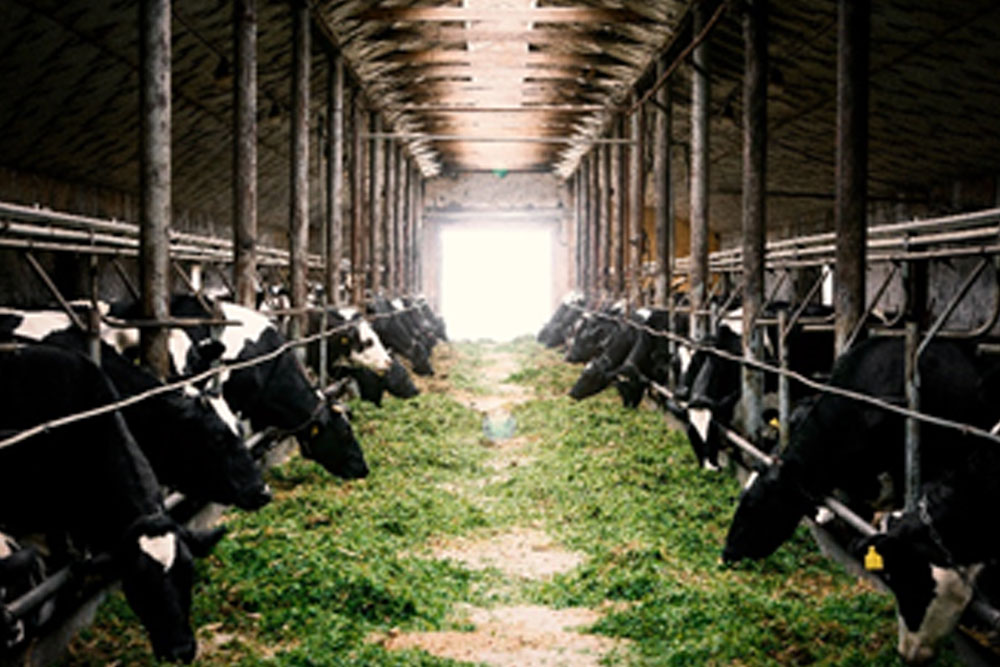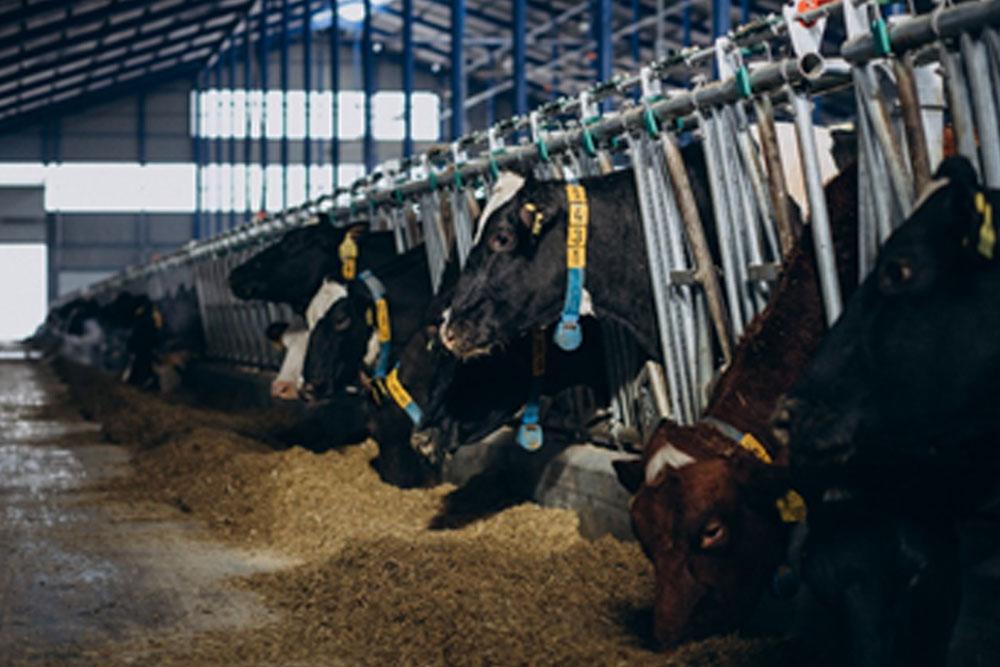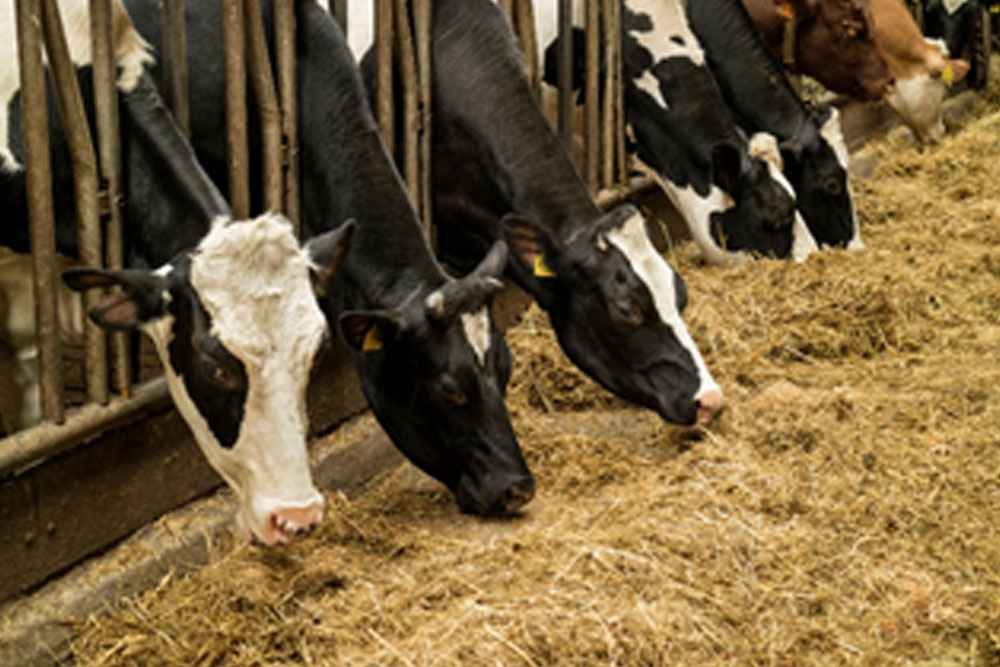EFFECTS OF FEEDING FREQUENCY IN DAIRY COWS

Feed provides the nutrients that are required or necessary for the production of milk, directly or indirectly these nutrients are the building blocks of milk solids. Thus providing enough feed to dairy cattle in much frequency result in more milk production. It is really critical to maximize the feed intake of the cattle so that the negative energy balance is reduced to a minimum during the early stages of lactation. If the consumption of energy increases as compared to the usage, the cows may gain weight resulting in bulkiness affecting milk production. Increasing feed intake resulting overall increase in energy may increase milk protein content by 0.2 to 0.3 percent. Increasing the feeding frequency of low fiber, high grain diets increases milk fats. Dasan provides a variety of Dasan dairy feeds/Dasan Wanda for lactating animals, required per their production and lactation stage.
High milk-yielding cows must consume 3.5 to 4.0 percent of their total body weight daily as dry matter. If the cattle are consuming less than this, production of milk might be limited. Following are the vital factors that may affect the feed intake:
High milk-yielding cows must consume 3.5 to 4.0 percent of their total body weight daily as dry matter. If the cattle are consuming less than this, production of milk might be limited. Following are the vital factors that may affect the feed intake:
- Feeding frequency
- Feed sequencing
- Environmental temperature
- Physical facilities
- Feed bunk management
- Ration moisture optimization (30 – 40%)
- Grouping strategy of herd
RUMEN FUNCTION
When the feeding time is increased by 5 to 6 times per day in cattle, their rumen pH remains stable ranging 5.5 to 5.8 (acidic) that is an ideal pH for the proper functioning of digestive enzymes. But when the animals are fed only once or twice a day, the pH will vary from 5.1 to 7.1 going towards basic medium resulting in low digestion. When the pH is stable in rumen, digestion of fiber will be efficient resulting in increased energy level needed for daily activities and milk production.

HORMONAL CHANGES
There are a wide range of hormonal changes associated with the feeding frequency as shown in the table below:

The elevated production of growth hormones in the group feeding 4x per day resulted in the daily gain of 1.40kg while those in the 1x per day group gained 1.27kg per day with the similar intake of feed. Frequent feeding lessen the insulin secretion, help producing body with more muscles and less fat, as insulin is directly linked with fat production. Similarly, less production of thyroid hormones with frequent feeding aids reduction in metabolic rate and heat increment, proving energy utilization for growth and milk production purpose

PRODUCTION OF MILK
Different studies has shown that by increasing the feed frequency twice resulting a rise of 3% in milk production. Similarly frequent feeding also shown an 8% rise in milk fat concentration, due the increased consumption of fiber that helps in the production of acetic acid in rumen, acting as a precursor of milk fat synthesis. Frequent feeding also improves the concentration of milk protein and lactose up to a remarkable level.

THERMAL STRESS MITIGATION
Heat stress and high body temperature can also be controlled by raising the feeding frequency. When the feed supply increases per day it promotes a uniform rate of absorption of nutrients and spreads the total heat increment due to the feeding over a prolong time period. During winters, cattle has to face severe weather variation like low-temperature, cool wind and rain, this could be the reason for severe illness and death of young calves. Providing smaller volume of feed more frequently resulting in better digestion and metabolic heat production that keep them warm to overcome weather stress.
FACTORS AFFECTING FOOD INTAKE
There are several factors that may affect the feed intake of the cattle. The most important are:
- Environmental factors
- Diet factors
- Cow factors
We maintain the integrity of all our Dasan dairy feeds / Dasan Wanda, by only using premium quality raw materials, we have strong relationship with a wide range of suppliers worldwide and are continually looking for competitive and best quality products globally, to use in our rations.
